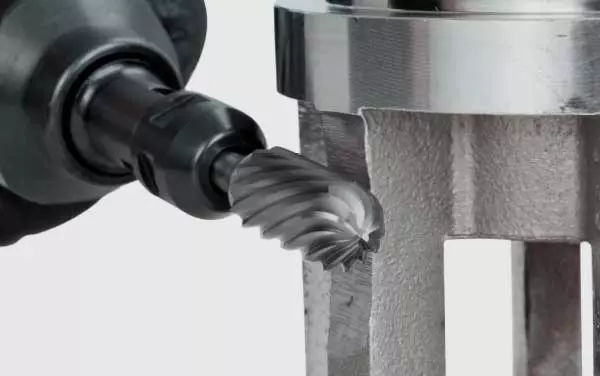
Industrial importance of tungsten carbide rotary burrs
Cemented carbide rotary burr is widely used in machinery, automobile, shipbuilding, chemical industry, craft carving, and or industrial sectors, with remarkable effect. And it is a very important industrial process tool. Cemented carbide rotary files are very important in industrial processing and production. Nowadays not only in industry, but rotary files are also used in the dentistry and medical beauty industries. People use it as an important means to improve production efficiency and realize fitter mechanization. Cemented carbide rotary burrs are very important in industrial processing.
At present, the overall average value of each industry is very conducive to the completion of cemented carbide burr processing operations. Tungsten carbide rotary burr can also be used to make rock drilling tools, mining tools, drilling tools, measuring tools, wear-resistant parts, metal abrasives, cylinder lining, precision bearings, nozzles, hardware molds (such as wire drawing dies, bolt molds, nut molds, and various fastener molds), and excellent performance of cemented carbide has gradually replaced previous steel molds.

Development of carbide burr
In the past 20 years, coated cemented carbide has also come out. Titanium carbide coated tool was successfully developed in Sweden in 1969. The substrate of the tool is tungsten titanium cobalt cemented carbide or tungsten cobalt carbide. The thickness of titanium carbide coating on the surface is only a few microns. However, compared with the same brand of alloy tool, the service life of the tool is prolonged by three times, and the cutting speed is increased by 25% – 50%.
Konetool continuously feels the urgent need of customers for excellent advanced experience sharing, so we pay more and more attention to introducing advanced processing knowledge and sharing processing experience to customers in our daily work. Products are hardware, knowledge is software. Only by combining the two can we provide comprehensive services for customers, and truly support customers to improve production efficiency and reduce production costs.

As the file is installed on the grinding machine and controlled manually during operation, the pressure and feed rate of the file are determined by the working conditions and the experience and skills of the operator. Although a skilled operator can control the pressure and feed speed within a reasonable range, here is something to explain.
It is necessary to replace or sharpen the shortened sand head in time to prevent it from being completely destroyed. . The sharpened head is very slow to cut, so the pressure of the grinder must be increased to increase the speed, and this will inevitably increase the damage caused by the filing and the grinder. The cost of the loss is much greater than the replacement or The cost of a heavy sharp grinding head.
Manufacture of carbide burr
Function relationship between the geometric shape of rotary file and coordinate axes of NC machine tool in NC machining of all kinds of rotary files provides a mathematical model for controlling various kinds of rotary files. According to the control model established by this mathematical model, workpieces that can meet the requirements of drawing can be machined on multi-coordinated simple NC machine tools.
Cemented carbide rotary burr is widely used in mold processing and or bench work. Although size of rotary file is not large, due to complex edge shape, as well as a variety of specifications, due to more teeth, complex profile, and various specifications, grinding of carbide burr has become a difficult problem. In order to solve this problem, a set of CNC systems based on industrial PC (IPC) is developed in this paper, which is based on four coordinate rotary file grinding machines developed.

According to the grinding motion model of the rotary file, the system realizes CNC grinding of cemented carbide rotary file by combining software with hardware. This paper first introduces the overall structure of two kinds of four coordinate rotary file grinding machine tools and makes a comparative analysis. n, combined with machine tool structure, after analyzing the feasibility of four coordinate grinding of the rotary file, fifteen kinds of mathematical models of rotary file grinding motion are established. According to functional requirements of rotary file grinding and current development of open CNC system, the control scheme of IPC machine motion controller driver stepping motor is adopted. According to this scheme, required hardware is selected and the connection between each hardware module is completed. At the same time, the design scheme of NC system software is determined, and the programming of CNC grinding system software of rotary files is completed.
After working out the processing scheme of the rotary file, the CNC system is used to carry out multi coordinate linkage control on four-axis rotary file grinding machine tool, and a large number of practical grinding tests are carried out for various types of rotary files. Through actual grinding, the correctness and feasibility of the grinding motion model of the rotary file are verified. At present, the first CNC grinding machine based on IPC developed by the school of mechanical engineering of Tianjin University has been put into practical use.